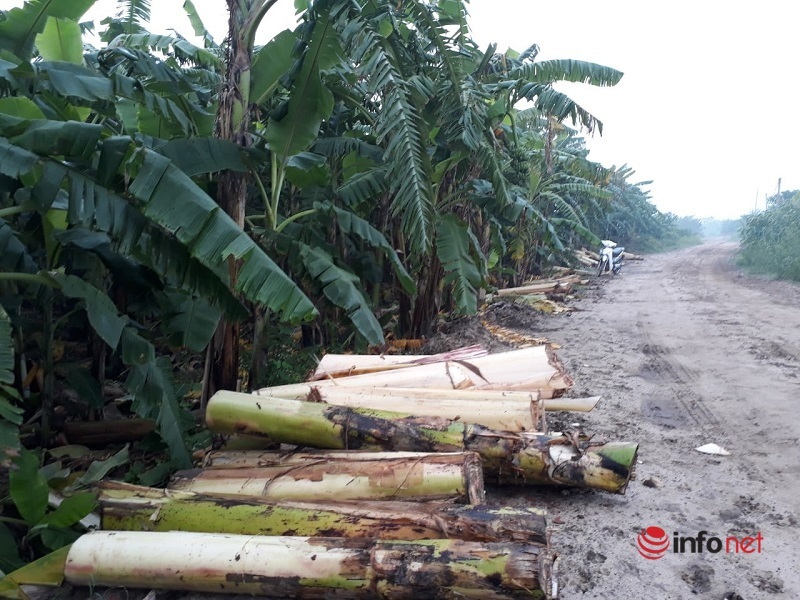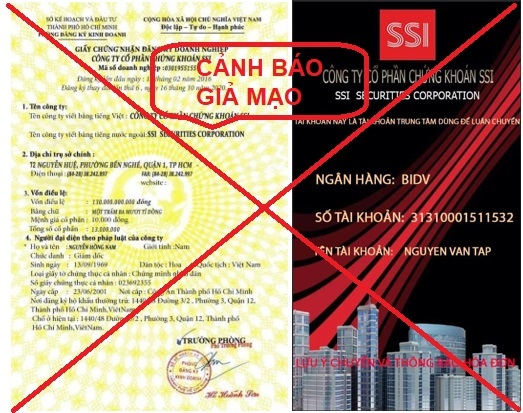How are banks lending to real estate?
In the context of many regulatory agencies sending messages to tighten credit to the real estate sector, many banks still maintain the view that they will continue to expand lending in this field.
From the beginning of 2022, the State Bank, the Ministry of Construction, and the Ministry of Finance have continuously issued instructions on closely monitoring and controlling credit granting and corporate bond investment activities in the real estate sector. to avoid risks.
In fact, it has been in place for many years now, requiring regulators to limit lending in potentially risky sectors such as real estate. However, the real estate industry still maintains its growth momentum and is one of the important sectors in the economy. Not only contributing 14% of GDP, real estate is also the main sector that pulls many other supporting industries such as mining, transportation, materials, construction…
According to the State Bank of Vietnam, by the end of the first quarter of 2022, the outstanding credit balance for real estate business was about approx. 784,000 billion VND, an increase of 84,000 billion compared to the end of 2021 and accounting for 7% of total credit outstanding. If you include the outstanding balance of personal loans to buy houses to live in, the credit balance related to real estate is currently about 2.09 million billion VNDaccounting for 20% of the total credit balance of the whole economy.
Regulatory agencies have continuously sent out messages to tighten credit in the real estate sector from the beginning of 2022. Photo: Nam Khanh. |
Hundreds of trillions of loans for real estate business
According to financial statements of banks, by the end of 2021, no bank will have outstanding loans for real estate business exceeding 30% of total outstanding loans to customers. Even, most of them maintain the proportion of loans in this sector below 10%.
The bank with the largest proportion of real estate loans today is Techcombank with about 27.6% of total outstanding loans. However, compared to a year ago, this proportion has decreased by more than 5.3 percentage points.
In terms of absolute numbers, Techcombank is also the bank with the largest loan balance for real estate business with more than 95,900 billion VNDan increase of 4,500 billion compared to the end of 2020.
Two other banks with the same proportion of real estate loans over 20% of total outstanding loans are Eximbank and VietBank with the ratio of 25% and 21.6% respectively.
In which, by the end of 2021, the total outstanding loans to customers reached nearly 114,700 billion VND and nearly 28,700 billion of which are loans for real estate business. Compared to the end of 2020, Eximbank’s loan balance in this field increased by nearly 1,900 billion VND, but the proportion decreased by nearly 1.6 percentage points.
VietBank has a customer loan balance of about 50,530 billion VND by the end of 2021 and about 10,900 billion of which are loans to real estate business. Similar to Eximbank, although VietBank’s loan balance for real estate business increased in the past year, the proportion of loans to this sector has decreased by nearly 1 percentage point.
| REAL ESTATE BUSINESS LOANS | |||||||||||
| Figures as of the end of 2021 | |||||||||||
| Labels | Techcombank | VPBank | BIDV | Eximbank | SHB | HDBank | Agribank (private) | MBBank | MSB | VietBank | |
| Outstanding loans for real estate business | billions dong | 95913 | 42567 | 31887 | 28695 | 24469 | 18914 | 17909 | 12632 | 12136 | 10910 |
| Proportion of total outstanding loans | % | 27.61 | 11.98 | 2.35 | 25.02 | 6.75 | 9.31 | 1.36 | 3.47 | 11.95 | 21.59 |
In addition to the three banks mentioned above, by the end of 2021, a number of banks that have a ratio of loans to real estate business over 10% of total outstanding loans are Vietcapital Bank with 15.7% (7,300 billion); VPBank with about 12% (42,600 billion) and MSB with 11.95%, equivalent to 12,100 billion VND.
According to Zing’s statistics, in 2021, although the balance of loans for real estate business increases, most banks tend to reduce the proportion of loans in this field to total outstanding loans. From large banks like BIDV, VPBank, ACB, Techcombank, SHB to smaller banks like LienVietPostBank, SeABank, Eximbank all recorded this trend.
In contrast, the banks that recorded growth in both the absolute number and the proportion of real estate loans last year were mainly groups with the proportion of less than 10% such as HDBank; MBBank; BacABank; TPBank; OCB…
A large amount of capital lies in home loans
With the group of state-owned banks (Agribank, VietinBank, BIDV, Vietcombank), while Vietcombank and VietinBank often do not record the proportion of real estate loans in their financial statements, the reports of Agribank and BIDV show details. balances of these loans.
Accordingly, the proportion of real estate loans at these two state-owned banks is currently very low, accounting for less than 3% of the total outstanding loans.
By the end of 2021, BIDV has total outstanding loans to customers reaching over 1,354 million billion VND, of which, nearly 31,900 billion are loans for real estate business, equivalent to 2.35%. Compared to the previous year, the proportion of loans in this field at BIDV decreased by 0.1 percentage point.
During the same period, Agribank has about 17,900 billion VND loans for real estate business, only accounted for 1.36% of the total outstanding loans to customers (1.314 million billion). Compared to the previous year, the outstanding loan for real estate business at this bank increased by about 1,500 billion, equivalent to 0.1 percentage point.
However, many financial experts said that in addition to loans for real estate business, the credit activities of banks in this field are also through loans to buy houses to live in, and this is the only way to do this. sectors with a high proportion.
Personal loans to buy houses to live in, receive land use rights to build houses are accounted into consumer loans outstanding at banks. Photo: Nam Khanh. |
Like at VPBank, next to near 42,600 billion VND outstanding loans for real estate business, accounting for 12% of total outstanding loans at the end of 2021, the bank still has approximately 54,350 billion VND personal loans to buy houses, receive land use rights to build houses, accounted for 15.3%.
Compared to the previous year, VPBank’s loan balance for this segment increased by more than 18,000 billion, equivalent to 2.8 percentage points. If combining the two areas mentioned above, the total outstanding loans to customers related to real estate at VPBank is currently about 96,900 billion VNDequivalent to 27.3% of the total outstanding balance at the end of 2021.
Similarly, Mr. Dao Manh Khang, Chairman of ABBank, said that besides 6% outstanding loans for real estate business, ABBank currently has 17% outstanding loans which are personal loans to buy houses to live in. Thus, the loan balance related to real estate at this bank is about 23%, equivalent to 15,800 billion VND.
At Sacombank, CEO Nguyen Duc Thach Diem also said that the ratio of real estate-related loans to total bank loans is currently about 22%, equivalent to more than 22%. 85,300 billion VND. However, about 60% of these are personal loans to buy houses to live in.
Still continue to lend
The general director of a commercial bank in Hanoi said that if you include home loans, the proportion of real estate loans at most banks is now over 20%. However, this is still a rate that is assessed by the regulator as a safe level, except for some cases where real estate loans have to be stopped recently.
The CEO said that the fact that some banks stopped lending to real estate recently was due to the high proportion of loans in this field. He added that loans in the real estate sector are controlled by the SBV on a daily basis, so banks with too large a proportion of loans will be placed in the warning group and forced to limit new lending.
Mr. Ho Hung Anh, Chairman of Techcombank’s Board of Directors, explained that the bank’s recent restriction on real estate lending was to comply with the general regulations of the State Bank. With good customers and projects, Techcombank still participates in finance. aid.
The bank president assessed that over the years, Techcombank has done very well in the real estate lending segment. In which, the projects that investment banks have reputable investors and leaders. Loans are also heavily focused on the group of homebuyers to live in, limiting lending to the land, or potentially speculative form, which does not bring surplus value.
“I don’t think Techcombank will change its long-term strategy with the real estate sector,” said Mr. Ho Hung Anh.
Many banks still have the policy of maintaining and expanding credit in the real estate sector. Photo: Nam Khanh. |
Although the management agencies continuously broadcast the message of tightening credit in the real estate sector, many banks said that they still maintain the view of continuing to expand credit in this field.
“Many banks have recently had a policy not to increase credit in the real estate sector, including lending to buy houses to live in, but ABBank has not had this orientation,” said Mr. Dao Manh Khang.
In 2021, ABBank was one of the banks with a positive growth in real estate loans, including real estate business, construction and housing loans. ABBank’s chairman said this fact stems from the increased demand for home loans from customers in 2021. However, he said the bank’s proportion of loans in the real estate sector is still at a safe level.
Mr. Nguyen Duc Vinh, General Director of VPBank, assessed that it is necessary to tighten credit policy in the real estate sector when this market is growing hot. However, he said that real estate was, is and will be an important sector of the economy, especially with the commercial banking system. For VPBank, real estate also plays an important role in the loan structure and will continue to be maintained and promoted.
According to the CEO, buying a house and buying a car are practical and essential needs of individuals, so it is necessary for banks to lend in this area.
However, in home loan activities, there are also many factors such as resort real estate, speculative real estate, etc. Therefore, the problem is that banks need to strictly manage and control them. with these loans, while those for actual housing needs still need to be extended.
According to zingnews.vn
at Blogtuan.info – Source: infonet.vietnamnet.vn – Read the original article here



